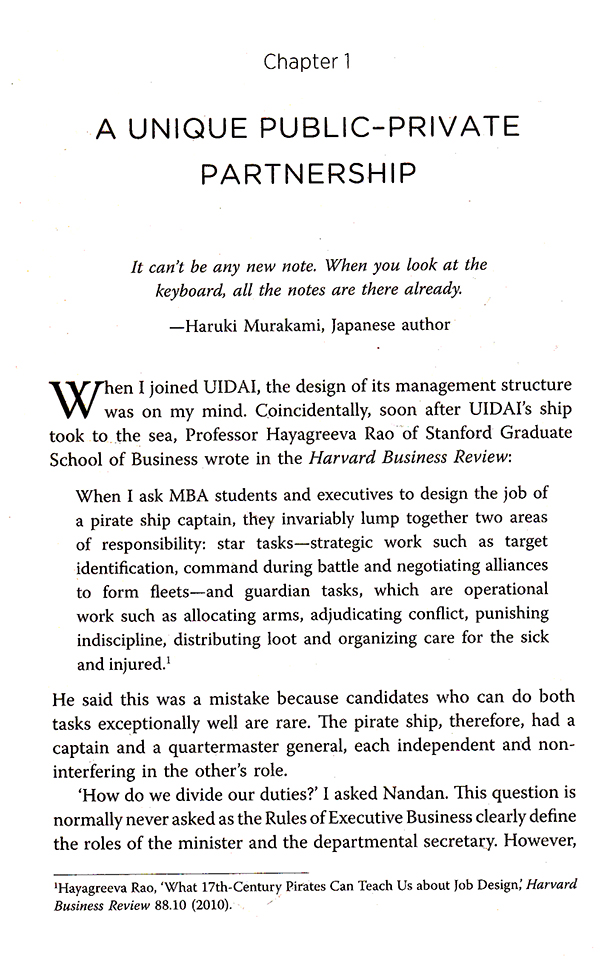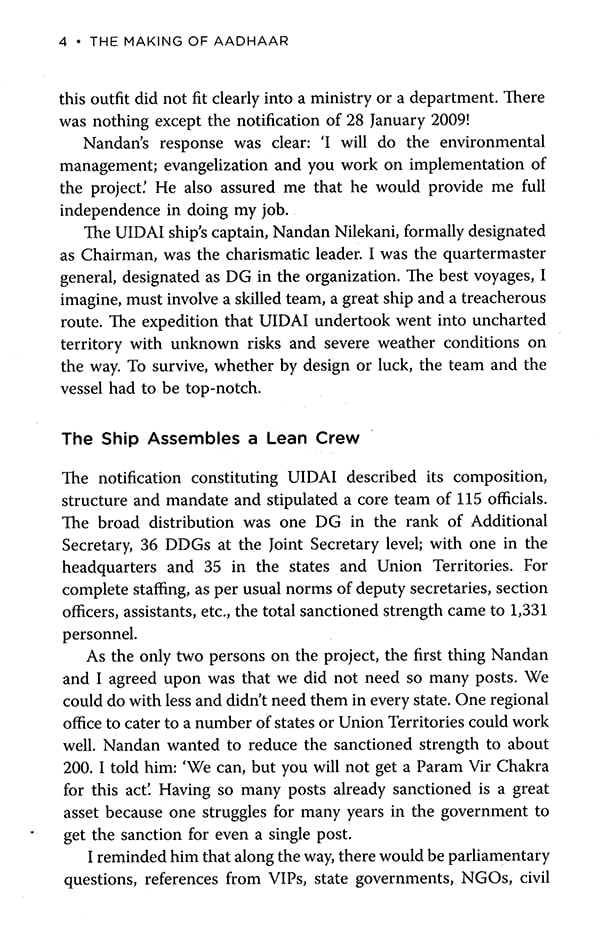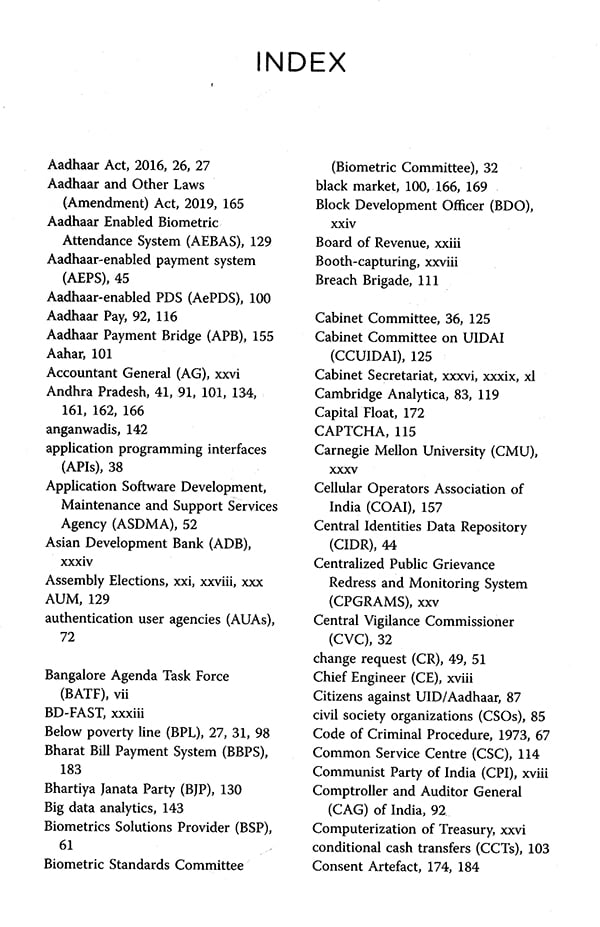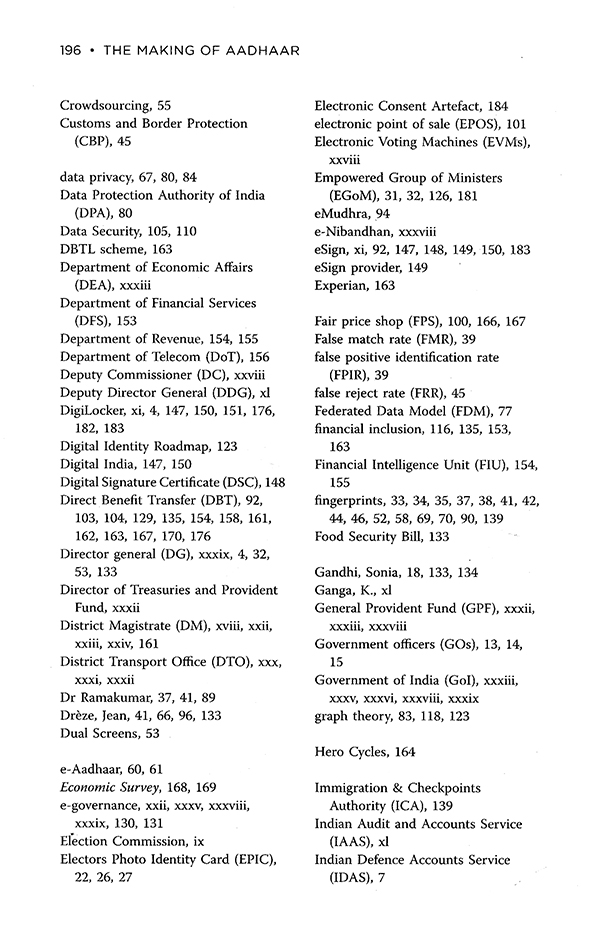
The Making of Aadhaar (World's Largest Identity Platform)
Book Specification
| Item Code: | NAZ612 |
| Author: | Ram Sewak Sharma |
| Publisher: | Rupa Publication India Pvt. Ltd. |
| Language: | English |
| Edition: | 2020 |
| ISBN: | 9789390356126 |
| Pages: | 244 |
| Cover: | HARDCOVER |
| Other Details | 9.00 X 6.00 inch |
| Weight | 340 gm |
Book Description
Aadhaar is the world's largest identity project that enrolled a billion residents. The Making of Aadhaar offers insights into the creation of this one-of-a-kind system, at a fraction of the cost of the alternative, less sophisticated identity systems that had been previously tried in India and elsewhere. That, by itself, makes for an interesting case study because outcomes of major projects, especially in government, tend to range from the `underwhelming' to the 'spectacular failures'. Aadhaar is the exception that proves the rule.
Alongside Nandan Nilekani, the author led a brilliant team in developing the technology that undergirds Aadhaar, enrolled the resident population of India, created an online authentication mechanism for the digital world, and operationalized the ecosystem to take advantage of the new identity.
This book is a first-hand account from the trenches which provides a lucid and in-depth understanding of the artefact called Aadhaar and how it continues to change and redefine India.
Ram Sewak Sharma is the chairman of the Telecom Regulatory Authority of India (TRAI) and was the first director general of the UIDAI. He is an engaging speaker, forthright in expressing his opinions that frequently appear in newspaper columns. While experts, activists, policy analysts, opinion makers, trolls and lay persons may have all found themselves disagreeing with Dr Sharma's opinions at different times, none would deny his achievement in large-scale IT projects, of which Aadhaar is a shining example.
This book isn't written to defend Aadhaar. It isn't an autobiographical account of my days at the Unique Identification Authority of India (UIDAI) either. Nor is it a declassification of materials previously withheld from the public or a compendium of anecdotes from those heady days! One learns from experience. In this book, I share an experience; not a small one by any measure. I also share my evaluation of what that experience could tell us.
The story is factual, but its evaluation would depend upon the person doing the interpretation. Your thoughts may differ from my own and will likely illuminate aspects that I missed. I hope you share them: in a tweet, an email, a blog post, a newspaper op-ed, or maybe even in a book. I hope to learn from all of that.
I've also learnt through experience that social media isn't conducive to a thoughtful exploration of ideas—especially when the topic has already polarized the views of people. We tend to react brutally to a part narrative or argument without taking the opportunity to first understand the context in which it is framed.
To an extent, the nature of the new medium itself is to blame for this fragmented expression and understanding. We know that human beings tend to persist with their viewpoint even in the face of evidence to the contrary. When we don't have the opportunity to reflect in silence, there is even less hope of escaping the 'echo chambers' of our minds.
In a sense, this book is a product of the need for a conversation that's not suited for social media, government reports, newspaper columns or television debates. We need this conversation to capture what made the unique ID project successful, where similar attempts have failed in the past, in India as well as elsewhere.
In my first book, Imagining India: Ideas for the New Century, I had written about the need for a unique identification platform to fix the country's leaky welfare distribution infrastructure. The government had, in parallel, thought of a unique ID system which was approved by the Cabinet in early 2009. My book gave it the confidence that I could do the job. Dr Manmohan Singh (then prime minister) gave me a chance to pursue this mission.
In 2009, I was invited to join the government to plan and implement the project. I joined the Unique Identification Authority of India (UIDAI) as its first chairman. Even with a limited experience of the internal workings of the government—thanks to my involvement with the Bangalore Agenda Task Force (BATF)—under the leadership of Mr S.M. Krishna, the former chief minister (CM) of Karnataka—I knew that a task as ambitious as giving a unique ID to all Indian residents would need an amazing CEO, ideally a maverick bureaucrat familiar with administrative processes and open to the transformative power of technology. I shared this challenging job description with a friend in the Indian Administrative Service (IAS), K.P. Krishnan. KP, prompt as ever, made an interesting introduction.
**Contents and Sample Pages**













